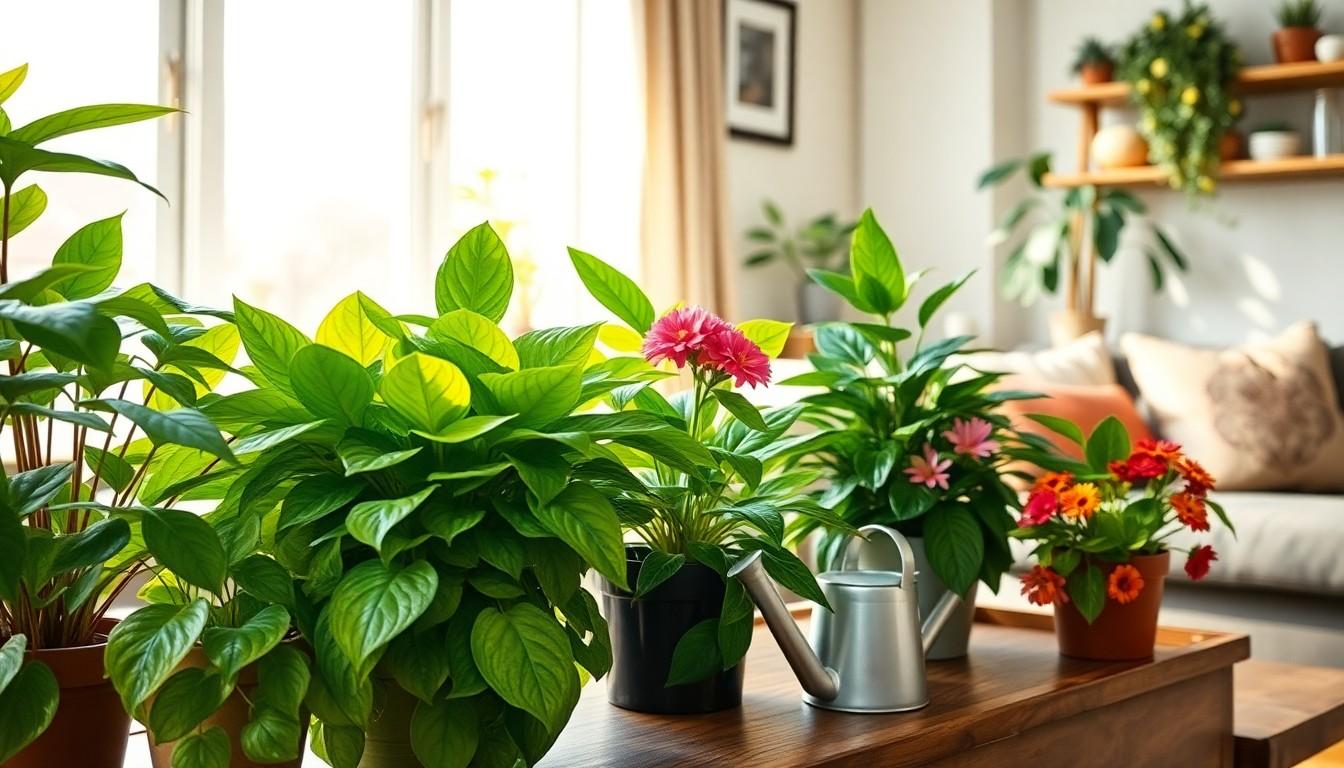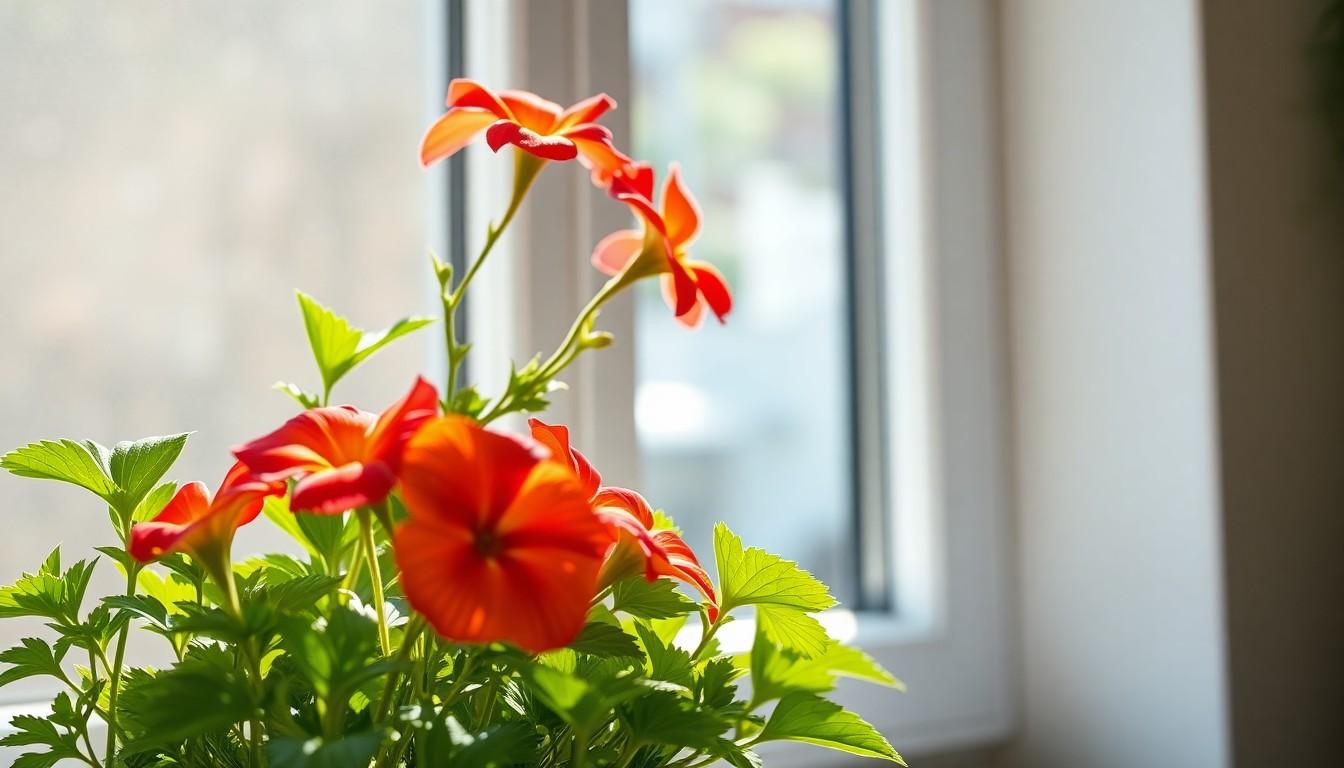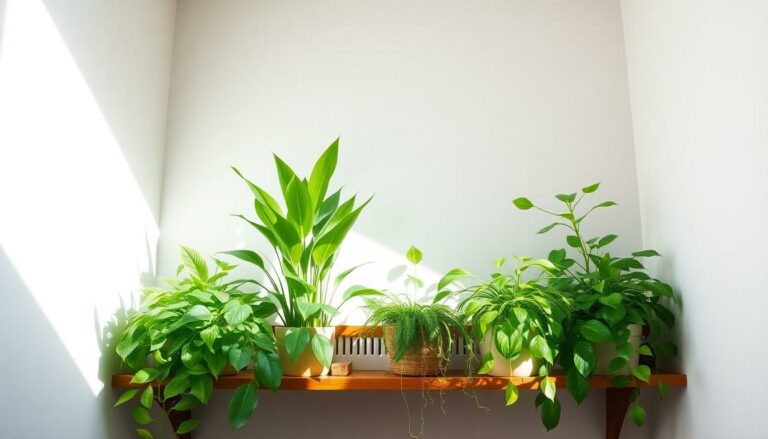The Best Fluffy Pancakes recipe you will fall in love with. Full of tips and tricks to help you make the best pancakes.

Worst Indoor Plants for Allergies: Avoid These Allergy Triggers at Home
Indoor plants can breathe life into any space, but some might just have a hidden agenda—turning your home into an allergy battleground. Imagine sneezing your way through a beautiful fern display or battling itchy eyes while admiring that supposedly “low-maintenance” peace lily. Not all greenery is created equal, and certain plants can unleash a pollen storm that’ll have you reaching for the tissues faster than you can say “bless you!”
Overview of Allergies and Indoor Plants
Allergies often stem from pollen, dust, and mold, causing symptoms like sneezing, itchy eyes, and respiratory issues. Indoor plants, although beautiful, sometimes contribute to these problems. Certain species produce pollen, which can exacerbate allergic reactions for sensitive individuals.
Some plants release volatile organic compounds (VOCs), potentially irritating the respiratory system and triggering allergy symptoms. Fungal spores from overwatered plants create mold, a common indoor allergen. Additionally, dust can accumulate on plant leaves, further affecting air quality and aggravating allergies.
The American Academy of Allergy, Asthma, and Immunology emphasizes the importance of selecting hypoallergenic plants. Not all plants are created equal in terms of allergy-friendliness. Options like snake plants and peace lilies generally pose fewer risks for allergy sufferers.
When considering indoor plants, it’s essential to evaluate factors such as pollen production and moisture levels. Avoiding plants with bright, showy flowers reduces the risk of pollen exposure. Implementing proper care routines helps maintain plant health, minimizing mold and dust accumulation.
Monitoring indoor humidity and ensuring adequate ventilation can create a more allergy-friendly environment. Individuals with allergies should carefully research and select plants that suit their health needs, prioritizing air quality over aesthetic choices.
Common Allergens in Indoor Plants

Allergies often stem from various allergens produced by indoor plants. Recognizing these allergens is key for allergy sufferers when selecting the right plants for their homes.
Pollen Production
Pollen production is a significant contributor to allergic reactions. Certain plants, particularly those with brightly colored flowers, release high levels of pollen into the air. This pollen can linger and trigger symptoms like sneezing, itchy eyes, and respiratory issues. Not all plants produce the same amount of pollen; some varieties are known for their lower pollen output. For people with sensitivities, choosing plants like peace lilies or snake plants can mitigate these allergy risks. Testing reactions to different plants can help individuals find suitable options.
Mold Growth
Mold growth is another concern for allergy sufferers. Overwatered plants create an environment conducive to mold, which can release spores into the air. These spores easily circulate and may exacerbate respiratory problems. Indoor humidity plays a vital role in mold development, so maintaining proper moisture levels is essential. Regularly checking the soil’s moisture content can help prevent mold issues. Keeping plant areas dry and well-ventilated reduces mold growth risks significantly. Prioritizing mold-free plants ensures a healthier indoor environment for all occupants.
Worst Indoor Plants for Allergies
Certain indoor plants can exacerbate allergy symptoms. Understanding which varieties to avoid can help create a healthier living space.
Plant 1: Spider Plant
Spider plants feature arching foliage that attracts dust. This dust can trigger respiratory issues in sensitive individuals. Another concern involves potential mold growth due to their preference for moist soil. The combination of dust and moisture creates an ideal environment for mold spores. People with allergies should consider the impact of spider plants carefully.
Plant 2: Ficus
Ficus trees, commonly known for their attractive leaves, produce significant pollen. This pollen can provoke allergic reactions, leading to symptoms like sneezing, congestion, or itchy eyes. Additionally, ficus plants require a high humidity environment that encourages mold growth. This further complicates the situation for allergy sufferers. Avoiding ficus may prove wise for those sensitive to allergens.
Plant 3: Peace Lily
Peace lilies are popular for their elegant flowers, yet they may pose risks for allergy sufferers. Their beautiful blooms release pollen that can irritate the respiratory system. Furthermore, peace lilies thrive in humid conditions, promoting mold growth in the soil. Mold can become airborne, worsening allergy symptoms. Opting for alternative plants is advisable for individuals with sensitivities.
Plant 4: Bamboo Palm
Bamboo palms are often chosen for their air-purifying qualities, but they can also create allergenic environments. These plants release pollen that could trigger allergic reactions in sensitive individuals. Moisture retention in the soil leads to mold growth, increasing exposure to spores. Individuals prone to allergies might find it beneficial to reconsider having bamboo palms indoors.
Tips for Choosing Allergy-Friendly Plants
Selecting the right plants can significantly reduce allergy symptoms. Achieving an optimal indoor environment involves understanding plant types and their impact on air quality.
Low Pollen Options
Consider plants with minimal pollen production. Spider plants and snake plants both create less pollen, making them ideal choices for allergy sufferers. They provide greenery without triggering allergic reactions. Moreover, peace lilies produce some pollen but are often manageable. Focusing on foliage plants rather than flowering varieties helps minimize exposure to allergens. Ferns also thrive indoors and release little to no pollen, ensuring a more comfortable atmosphere. This strategic selection leads to a healthier indoor environment for all occupants.
Air Purifying Plants
Air purifying plants improve indoor air quality, which benefits allergy sufferers. Common options like the snake plant and bamboo palm filter out harmful toxins and allergens. These plants not only enhance aesthetics but also contribute to cleaner air. Consider adding a pothos plant, known for its robust air-cleaning abilities. Regularly incorporating these plants helps maintain a refreshing atmosphere indoors. Moreover, managing moisture levels ensures mold doesn’t develop around these plants. Maximizing air purification offers significant relief for those with respiratory sensitivities.
Conclusion
Choosing the right indoor plants is essential for maintaining a healthy environment for allergy sufferers. By avoiding plants known for high pollen production and mold growth, individuals can significantly reduce allergy symptoms. Prioritizing hypoallergenic options like snake plants and pothos can enhance indoor aesthetics without compromising health.
Regular maintenance and moisture management are crucial in preventing mold and dust accumulation. With careful selection and attention to plant care, creating a beautiful and allergy-friendly indoor space is entirely achievable. This thoughtful approach ensures a more enjoyable living environment for everyone.




